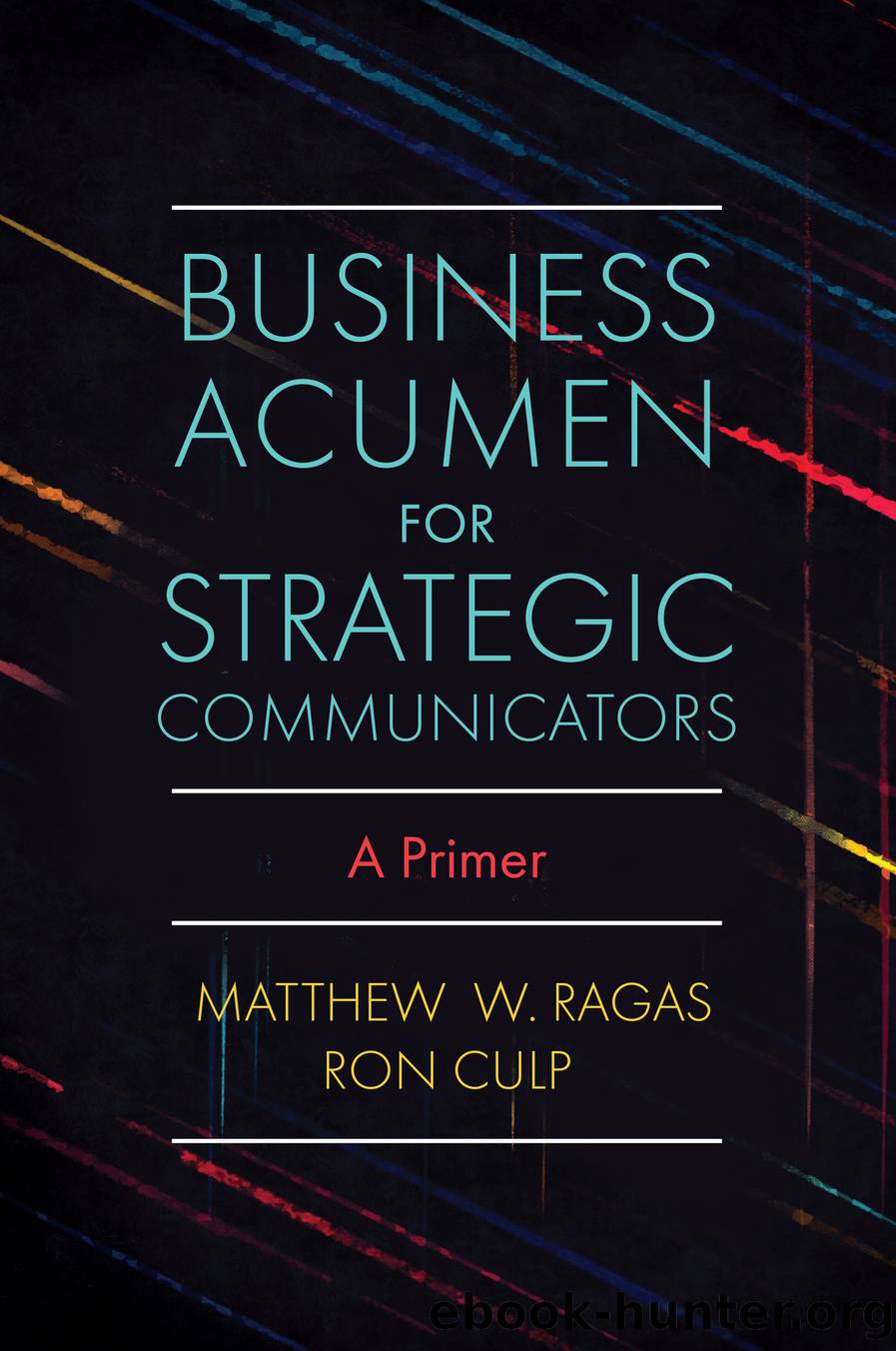Business Acumen for Strategic Communicators by Ragas Matthew W.;Culp Ron;

Author:Ragas, Matthew W.;Culp, Ron;
Language: eng
Format: epub
Publisher: Emerald Publishing Limited
Published: 2021-02-05T00:00:00+00:00
PART V
BUSINES MODELS
10
Strategic Communication Agencies and Consultancies
It was the cold call that started a relationship which helped build one of the worldâs most valuable consumer brands and one of the largest US-based public relations (PR) agencies.
In 1957, a then 28-year-old Al Golin cold called Ray Kroc. Kroc, a milkshake mixer salesman turned entrepreneur, had only several years earlier bought the franchising rights to a promising, but still fledgling quick service restaurant concept called McDonaldâs. Golin pitched Kroc on PR being an economical way for him to help rapidly grow McDonaldâs locations around the country. After inviting Golin to pitch him in person, Kroc was so impressed with Golinâs ideas that he hired the small agency, agreeing to pay a $500-a-month retainer, which in todayâs dollars would be worth around $4,500 (GOLIN, 2017; Roberts, 2017).
Kroc praised Golin and his now eponymously named firm, GOLIN, for being key to the growth and success of McDonaldâs (Golin, 2006; Roberts, 2017). In Krocâs (1992) memoir, he says that Golin and his agency âdeserve a lot of the credit for making McDonaldâs a household wordâ (p. 100). For example, Golin is credited with helping develop many of the community-focused initiatives for which McDonaldâs is still known, including expanding Ronald McDonald House nationally and creating the McDonaldâs All-American High School Basketball Game and the All-American High School Marching Band (GOLIN, 2017).
The agencyâclient relationship between GOLIN and McDonaldâs has endured for more than six decades and has been critical to the agencyâs own sustained growth and success (Golin, 2006). At the time of Golinâs passing in 2017, GOLIN, a unit of Interpublic Group (IPG), had become one of the worldâs 10 largest PR and communication agencies, employing more than 1,200 people in more than 50 offices around the world (GOLIN, 2017; Roberts, 2017).
At its core, agencies and consultancies are all about relationships: building, sustaining and growing relationships with clients and helping clients to build stronger relationships with their stakeholders and society. Underneath these relationships are the reality that almost all agencies and consultancies are structured as for-profit entities that must create enough value for clients to generate the revenues needed to cover the agency or consultancyâs expenses and produce a healthy level of profits. However, not enough time is spent in many college and university programs helping young professionals to learn âthe business of the business.â Much about agency and consultancy business models is often learned over time on the job.
âWhen you work at an agency or consultancy, you get to help run a business â you get to sell your ideas, work with dynamic clients, manage projects and help build a business,â says Kathy Cripps, senior counselor at Prosper Group, a consultancy that advises owners of agencies. Cripps, a former president of the PR Council, is an agency veteran, having founded, built and sold a mid-sized healthcare PR firm (personal communication, June 3, 2020). âThe agency business marries creativity, management and strategy. Aspiring and new agency pros who roll up their sleeves and really learn âthe business of the businessâ make themselves invaluable.
Download
This site does not store any files on its server. We only index and link to content provided by other sites. Please contact the content providers to delete copyright contents if any and email us, we'll remove relevant links or contents immediately.
| Bookkeeping | Business Mathematics |
| Business Writing | Communications |
| Decision Making | Negotiating |
| Project Management | Running Meetings & Presentations |
| Secretarial Aids & Training | Time Management |
| Training |
Nudge - Improving Decisions about Health, Wealth, and Happiness by Thaler Sunstein(7227)
Deep Work by Cal Newport(6534)
Principles: Life and Work by Ray Dalio(5935)
The Doodle Revolution by Sunni Brown(4495)
Factfulness: Ten Reasons We're Wrong About the World – and Why Things Are Better Than You Think by Hans Rosling(4479)
Eat That Frog! by Brian Tracy(4143)
Thinking in Bets by Annie Duke(3990)
Hyperfocus by Chris Bailey(3894)
Visual Intelligence by Amy E. Herman(3616)
Writing Your Dissertation in Fifteen Minutes a Day by Joan Bolker(3570)
How to Win Friends and Influence People in the Digital Age by Dale Carnegie & Associates(3359)
Ogilvy on Advertising by David Ogilvy(3319)
Hidden Persuasion: 33 psychological influence techniques in advertising by Marc Andrews & Matthijs van Leeuwen & Rick van Baaren(3287)
How to win friends and influence people by Dale Carnegie(3265)
The Pixar Touch by David A. Price(3201)
Schaum's Quick Guide to Writing Great Short Stories by Margaret Lucke(3178)
Deep Work: Rules for Focused Success in a Distracted World by Cal Newport(2967)
Work Clean by Dan Charnas(2885)
The Slow Fix: Solve Problems, Work Smarter, and Live Better In a World Addicted to Speed by Carl Honore(2835)
